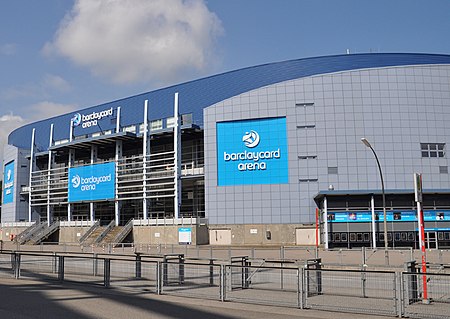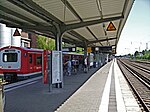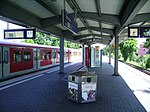Barclaycard Arena (Hamburg)
2002 establishments in GermanyBasketball venues in GermanyBuildings and structures in Altona, HamburgEvent venues established in 2002German sports venue stubs ... and 5 more
Handball venues in GermanyIndoor arenas in GermanyIndoor ice hockey venues in GermanySports venues completed in 2002Sports venues in Hamburg

The Barclays Arena (originally known as the Color Line Arena and formerly known as barclaycard arena and O2 World Hamburg) is a multipurpose arena in Hamburg, Germany. It opened in 2002 and can hold up to 16,000 people (13,800 or 12,947 for sporting events). It is located at Altona Volkspark, adjacent to the football stadium Volksparkstadion and the Volksbank Arena in Hamburg's western Bahrenfeld district. The arena is primarily used for pop/rock concerts and was the home of handball club HSV Hamburg and ice hockey team Hamburg Freezers until both teams folded in 2016. The Barclaycard Arena is among the most modern venues in Europe.
Excerpt from the Wikipedia article Barclaycard Arena (Hamburg) (License: CC BY-SA 3.0, Authors, Images).Barclaycard Arena (Hamburg)
Sylvesterallee, Hamburg Bahrenfeld (Altona)
Geographical coordinates (GPS) Address Phone number Website External links Nearby Places Show on map
Geographical coordinates (GPS)
| Latitude | Longitude |
|---|---|
| N 53.589166666667 ° | E 9.8991666666667 ° |
Address
Barclays Arena
Sylvesterallee 10
22525 Hamburg, Bahrenfeld (Altona)
Germany
Open on Google Maps










